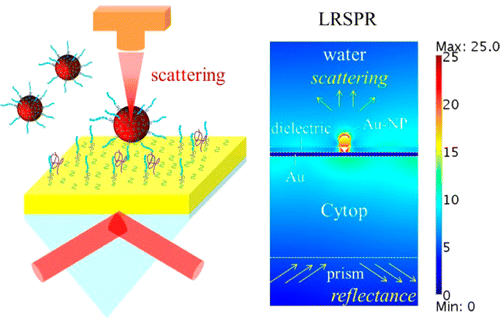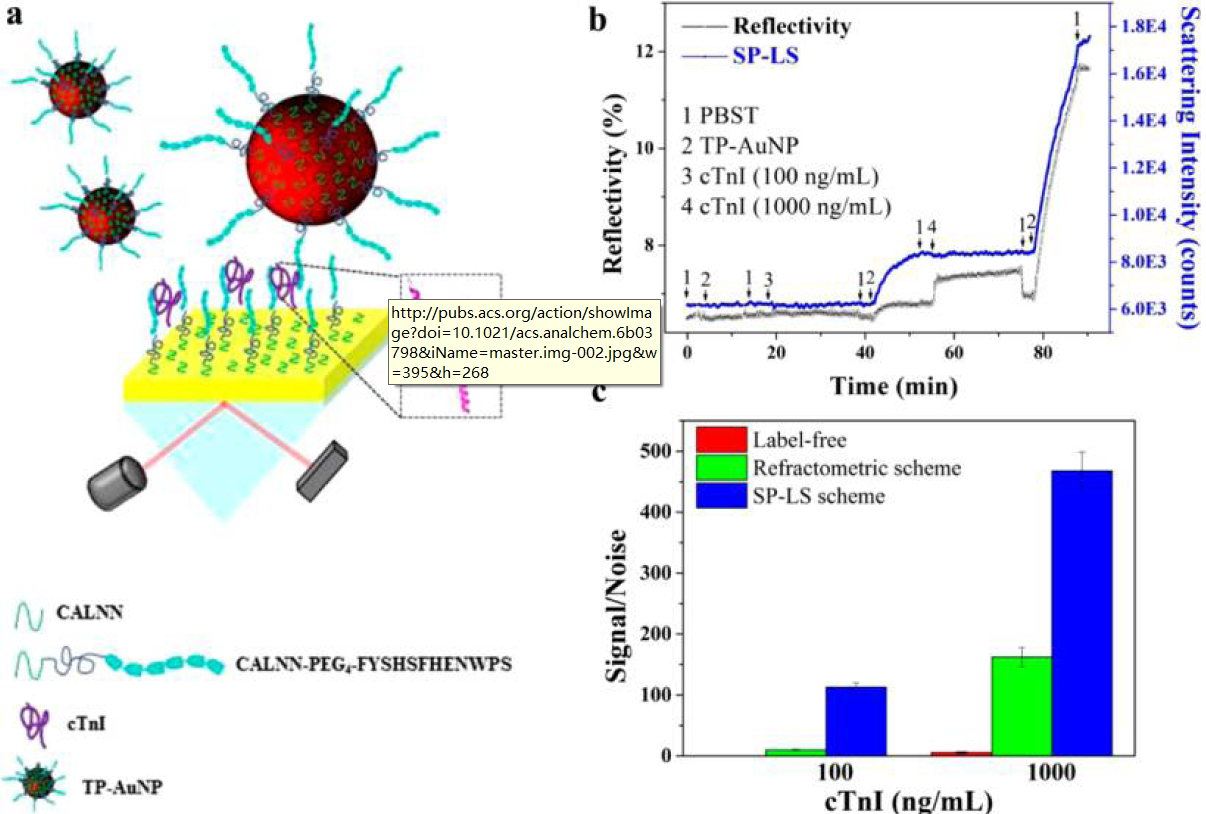- Newsroom
- Research Progress
- Academic Events
- Join Us

Herein, an ultrasensitive scheme for signal enhancement based on the concept of surface-plasmon-resonance-enhanced light scattering (SPLS) was validated experimentally and theoretically. The SP-LS of gold nanoparticles’ (AuNPs) tags was employed in a sandwich assay for the detection of cardiac troponin I and provided up to 2 orders of magnitude improved sensitivity over conventional AuNPs-enhanced refractometric measurements and 3 orders of magnitude improvement over label-free SPR. Simulations were also performed to provide insights into the physical mechanisms.

Surface-plasmon-enhanced light scattering of nanoparticle secondary probes has been used for the first time as an amplification scheme for biosensing applications. Both simulation and experimental studies confirmed the significant signal amplification resulting from SP-LS. Experimental results using AuNPs-enhanced cTnI assay demonstrated that SP-LS provides up to 2 orders of magnitude higher sensitivity than conventional refractometric schemes for both conventional surface plasmon resonance and long-range surface plasmon resonance substrates. In addition, a 10-fold LOD improvement was achieved for the detection of cTnI based on LRSPR SP-LS as compared with cSPR. Theoretical studies show that the improved LOD is due to the inherently higher field intensity for LRSPR at low AuNPs densities. Further studies to determine the structure function relationship of the AuNPs in SP-LS biosensing are warranted to further optimize this new biosensing concept. Considering the excellent results obtained in this study, we expect that surface-plasmon-enhanced light scattering will be employed in the near future as a highly sensitive method for immune-sandwich biosensing applications.